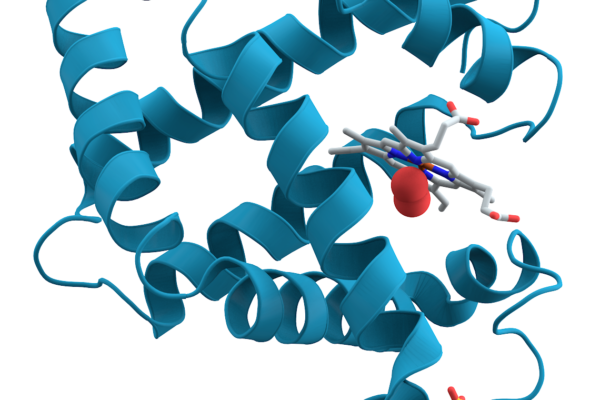Extraordinary enzymes

Enzymes are proteins comprised of amino acids linked together in one or more polypeptide chains. This sequence of amino acids in a polypeptide chain is called the primary structure. This, in turn, determines the three-dimensional structure of the enzyme, including the shape of the active site.
They act as biological catalysts by accelerating chemical reactions. The molecules upon which enzymes may act are called substrates, and the enzyme converts the substrates into different molecules known as products. Almost all metabolic processes in the cell need enzyme catalysis in order to occur at rates fast enough to sustain life.
Like all catalysts, enzymes increase the reaction rate by lowering its activation energy. Some enzymes can make their conversion of substrate to product occur many millions of times faster.
Chemically, enzymes are like any catalyst and are not consumed in chemical reactions, nor do they alter the equilibrium of a reaction. Enzymes differ from most other catalysts by being much more specific. Enzyme activity can be affected by other molecules: inhibitors are molecules that decrease enzyme activity, and activators are molecules that increase activity.
Power. Australian scientists have discovered an enzyme that converts air into energy. The finding, published in the top journal Nature, reveals that this enzyme uses the low amounts of the hydrogen in the atmosphere to create an electrical current. This finding opens the way to create devices that literally make energy from thin air.
The Monash University researchers extracted the enzyme responsible for using atmospheric hydrogen from a bacterium called Mycobacterium smegmatis. They showed that this enzyme, called Huc, turns hydrogen gas into an electrical current.
Dr Grinter notes, “Huc is extraordinarily efficient. Unlike all other known enzymes and chemical catalysts, it even consumes hydrogen below atmospheric levels – as little as 0.00005% of the air we breathe.” It is astonishingly stable. It is possible to freeze the enzyme or heat it to 80 degrees celsius, and it retains its power to generate energy.
Plastics. An enzyme variant created by engineers and scientists at The University of Texas at Austin can break down environment-throttling plastics that typically take centuries to degrade in just a matter of hours to days.
This discovery, published today in Nature, could help solve one of the world’s most pressing environmental problems: what to do with the billions of tons of plastic waste piling up in landfills and polluting our natural lands and water. The enzyme has the potential to supercharge recycling on a large scale that would allow major industries to reduce their environmental impact by recovering and reusing plastics at the molecular level.
Oil. Petroleum is one of the largest energy sources in the world. However, contaminants from petroleum derivatives pose a serious threat to several ecosystems and are major contributors to environmental pollution in the current industrialized era.
These contaminants often times make their way into the aquatic ecosystem by means of oil spills, run offs, or through effluents discharged from hydrocarbon industries. These industrial effluents are often toxic in nature, sometimes carcinogenic as well. The traditional mechanical and chemical disposal techniques of these intoxicants are tedious and expensive, and at times cause adverse environmental impacts.
This results in the need for developing remediation techniques which are ecofriendly, cost effective, and nonhazardous. Bioremediation using enzymes offers a highly sustainable, nondeleterious, and cheap alternative which can be applied to a wide range of biomass. The usage of free enzymes for hydrocarbon decomposition dwindles the possibility of releasing genetically modified organisms into the environment while releasing useful bioenergy.
From pipelines to tankers, oil spills and their impact on the environment are a source of concern. These disasters occur on a regular basis, leading to messy decontamination challenges that require massive investments of time and resources. But however widespread and serious the damage may be, the solution could be microscopic – Alcanivorax borkumensis – a bacterium that feeds on hydrocarbons.
Professor Satinder Kaur Brar and her team at INRS have conducted laboratory tests that show the effectiveness of enzymes produced by the bacterium in degrading petroleum products in soil and water. Their results offer hope for a simple, effective, and eco-friendly method of decontaminating water and soil at oil sites.
A. borkumensis, a non-pathogenic marine bacterium microorganism’s genome contains the codes of a number of interesting enzymes and it is classified as “hydrocarbonoclastic” — i.e., as a bacterium that uses hydrocarbons as a source of energy. A. borkumensis is present in all oceans and drifts with the current, multiplying rapidly in areas where the concentration of oil compounds is high, which partly explains the natural degradation observed after some spills.
A. borkumensis boasts an impressive set of tools: during its evolution, it has accumulated a range of very specific enzymes that degrade almost everything found in oil. Among these enzymes, the bacteria’s hydroxylases stand out from the ones found in other species: they are far more effective, in addition to being more versatile and resistant to chemical conditions.
Cooking oils are a major hazard in many sewerage systems. These are the result of food processing including outlets like McDonald’s and Kentucky fried. These enzymes are being used to alleviate this problem.
Bacteria could even thrive on nuclear waste dumped deep underground and immobilise it to make it safer. Certain microbes can use radionuclides such as uranium and neptunium in place of oxygen, studies have found. In doing so, they convert them from soluble to insoluble forms, making them less mobile.
This should give us more confidence in waste disposal plans, says Jonathan Lloyd, a geomicrobiologist at the University of Manchester, UK, who presented the research at the annual meeting of the Microbiology Society in Edinburgh recently.
Enzymes are used in industrial processes, such as baking, brewing, detergents, fermented products, pharmaceuticals, textiles, leather processing and many more. They truly are extraordinary.

Alan Stevenson spent four years in the Royal Australian Navy; four years at a seminary in Brisbane and the rest of his life in computers as an operator, programmer and systems analyst. His interests include popular science, travel, philosophy and writing for Open Forum.












